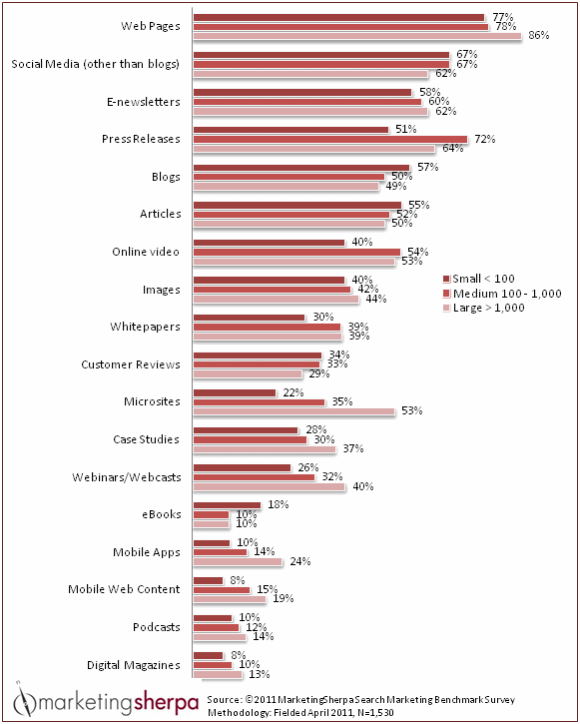Anyone familiar with press releases sees it all the time: a bunch of words that don’t say anything. I’ve personally read releases with three or four sentences of real information. The rest was just superlatives and hype.
Marketing strategist David Meerman Scott has targeted this type of writing since at least 2007, starting with his Gobbledygook Manifesto. In 2009, he pooled resources and queried journalists to pull together 325 common phrases. He then worked with Dow Jones to analyze their occurrences in over 700,000 North American press releases sent in 2008.
The top three most-used “gobbledygook” phrases they found:
1. “Innovate” (and all its derivatives)
2. “Pleased to”
3. “Unique”
“You see that stupid word [innovate] everywhere,” Scott says. “Every company is claiming how innovative they are, how innovative their products are…It’s so over used to have literally become meaningless.”
At best, potential customers ignore such words, Scott says, and at worst they’re insulted by them. Furthermore, the words do nothing to differentiate a brand, and they’re unlikely to be used by someone in a search engine. They’re truly empty phrases.
I recently interviewed Scott to ask him how social media can help cure a company’s addiction to these phrases (keep an eye on our Great Minds newsletter for the article). Scott shared a wealth of information — and not all of it made it into the final piece.
Here are some steps he suggests for checking whether your company uses too much “gobbledygook”:
First, check content on your website, press releases and other marketing content. Look for clichés listed here and in the Dow Jones analysis linked above. Examples include:
o “Mission critical”
o “Ground breaking”
o “Market leading”
Also, check if your content describes how your products solve your customers’ problems, and if it’s written in your customers’ language. Too many companies, Scott says, speak in a language that is only understood internally.
“People are dreaming up this language in a vacuum.”
For a good test, Scott suggests taking a block of questionable text, finding all references to your brands and products and replacing them with your competitors’ brands and product names.
“If the language still sounds accurate, then you’re in deep trouble,” he says. You’re not differentiating yourself at all.









